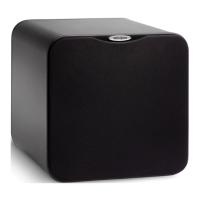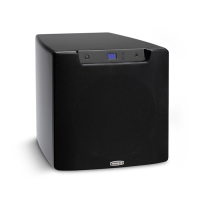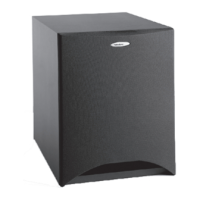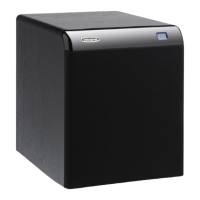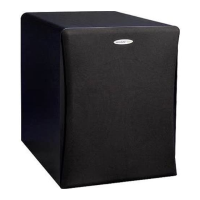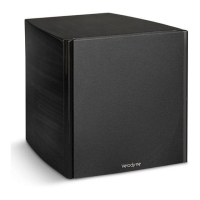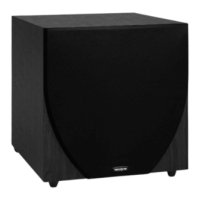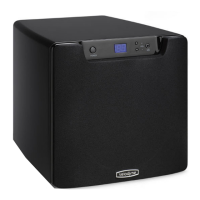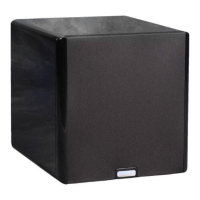www.velodyne.com
4 - MicroVee User’s Manual
MINI-JACK Thru
This connection passes along the input signal from the MINI-JACK input unchanged.
Speaker Level Output
These speaker level connections connect to your main speakers. There is 120 Hz high-pass crossover that
removes the bass frequencies from your main speakers. This frees them of the burden of playing bass, which
makes the entire system perform better.
Volume Control
This control allows you to balance the output from the subwoofer to the main speakers in your system. This
control should be set to achieve similar output level from both the main speakers and subwoofer when listening
to music. A good starting point for the volume control is three or four dots from minimum.
WARNING: Some manufacturers preset their receivers with the Sub-Out channel signal at a minimum level. It
is very important to verify that your receiver Sub-Out channel is set to the same output level as your front right
and left channels. Refer to your receiver manual for the individual channel level adjustment procedure. If your
receiver Sub-Out channel is set too low, the subwoofer may appear to have a weak output, it may sound noisy
or distorted, and the Auto On/Off feature may not operate properly.
Low-pass Crossover - 50 to 200 Hz
All inputs sum the left and right channels together, with the resulting signal passing through an adjustable
low-pass crossover before being amplied. The crossover control allows you to adjust the upper limit of the
subwoofer’s frequency response from 50 to 200 Hz. The subwoofer’s response will begin rolling o above the
frequency you set this control to. You should set the crossover frequency to obtain a smooth and seamless
transition from the subwoofer to the main speakers in your system. If your main speakers are smaller with limited
low frequency output, you may wish to choose a higher frequency (such as 100-120 Hz) than you would with
larger speakers which have greater low frequency output. With larger speakers, you might start with this control
set lower, such as 80 Hz.
Phase Adjustment - 0°/180°
This control allows you to “reverse” the phase of the subwoofer’s output signal 180° to correct for any possible
mismatch and resulting cancellation between the subwoofer and your main speakers. To adjust, simply listen to
the system with music playing. Then move the switch from one position to the other and listen for a change in
low frequency output. The correct position will have a greater amount of apparent low frequency output.
Crossover Switch - INTERNAL X-OVER/SUBWOOFER DIRECT
This switch allows the MicroVee’s internal crossover circuitry to be bypassed. This is required in certain
installations which route the signal through external processors with a crossover circuit of their own. Simply
move the switch to SUBWOOFER DIRECT to disengage the built-in crossover. For all other installations which
do not have a separate electronic crossover, we recommend you leave the switch set to INTERNAL X-OVER
to provide optimum performance.
NOTE: This is explained further in the section below entitled “A Word About Crossovers”. Auto Turn On Function
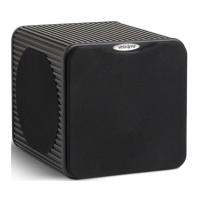
